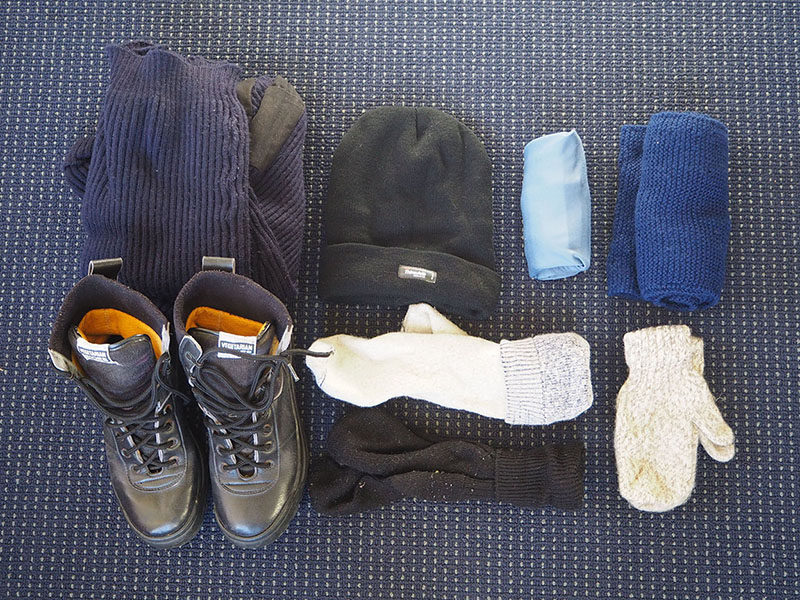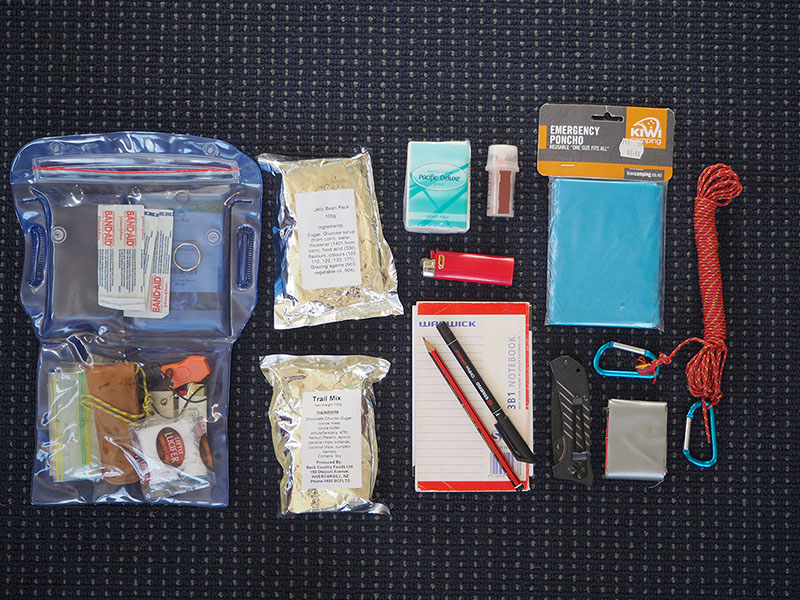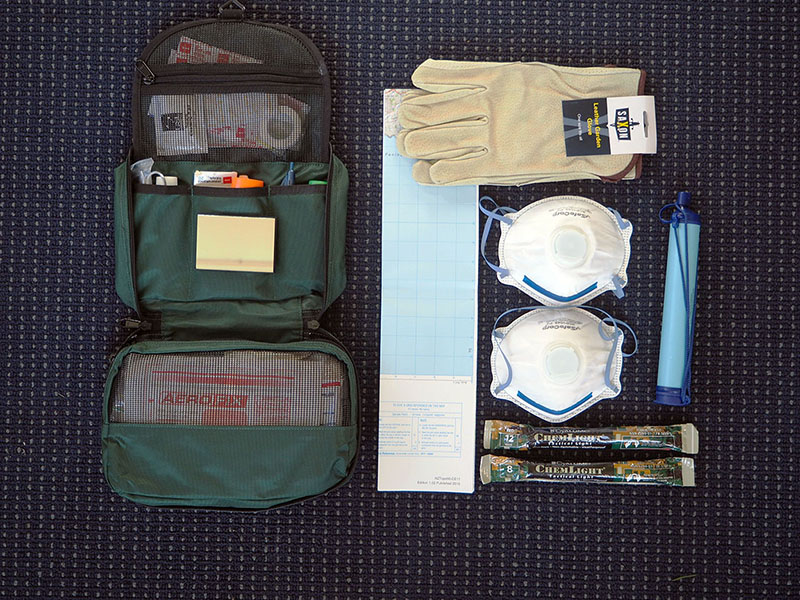After yet another natural distaster around here with flooding all over the country as a result of Cyclone Cook, I find myself once again thinking about emergency kits. I do quite a lot of thinking on this front, but very little action. I get the feeling I’m not alone in this, and my fellow Google-warriors might be having a similar experience to mine: most of the survival stuff out there leans towards hyperbole at best.
Survivalism
I don’t want to fall under this heading. I’m not trying to be a “prepper” or to get ready for the zombie apocalypse. Like many New Zealanders, I am just a bit worried that the next thing might happen to me (for some of us, again). What this means is that for once (yeah right), Google is a little less than helpful. The web is not forthcoming with sensible, realistic advice for me. It tries to sell me pre-packaged emergency kits or remind me that I’ll need to protect myself against all those nasy neighbours that will want to fight me for my hard-earned survival gear.
Survival gear vs. emergency kit
If you want to find any useful information about getting through a SHTF situation you have to call a spade a spade (and not a folding military tactical shovel). In other words, when I Google survival gear I get zombies and violent passers-by, but if I want genuine personal disaster relief advice I can find a little bit if I look for “emergency kit” instead. But the stuff about the zombies is so much more engaging and thorough, and offers some real insights into how people really are preparing for a sudden tyranical government or the outbreak of WWIII.
As we’ve seen in our neck of the woods recently, however, there is some truth to the necessity of being prepared for the worst. For real.
Starting small
New Zealand Civil Defence recommends having an emergency plan and the proper equipment and supplies to deal with disaster, both at home and at work. Building a full-on home disaster kit, whether it’s a hard-core bug out bag or a big plastic bin in the basement, is a pretty daunting task. Not to mention pretty expensive.
One thing I could recommend if you’re dipping your toe in the emergency planning ocean is to start small with a get home bag. One of our worst disasters in recent times occured when people were at work, and many found themselves stranded away from home with no access to their personal posessions. If you think about how much time you spend at the office, you can see the high liklihood of being there during a storm, flood, earthquake or other event which cuts you off from your normal route home. A normal backpack under your desk with some vital backup gear could make the difference between a total crisis and a bad situation that you are nevertheless partly equipped to deal with.
Get Home Bag (GHB) gear list
At this point it might be worth having a look at what the backpack tuced under my desk at work actually contains.
Clothing
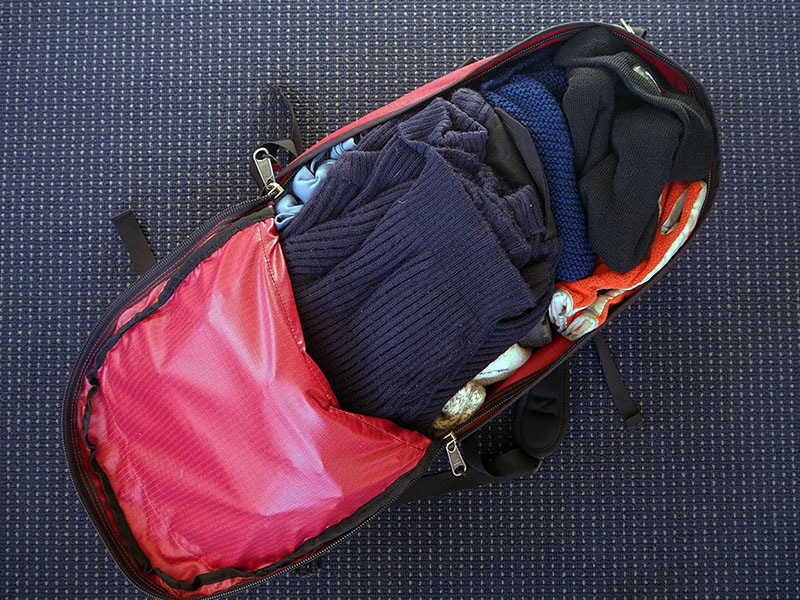
- wooly jumper
- polyprop undershirt
- warm hat and gloves
- spare warm socks
- scarf
- comfortable boots
- plastic rain poncho
This stuff actually takes up the majority of space in my GHB, but if I’m going to be on my feet for hours in terrible weather I’ll be wearing it, not carrying it. That means the space this took up will be repurposed for carrying water and food (see next section).
Rations
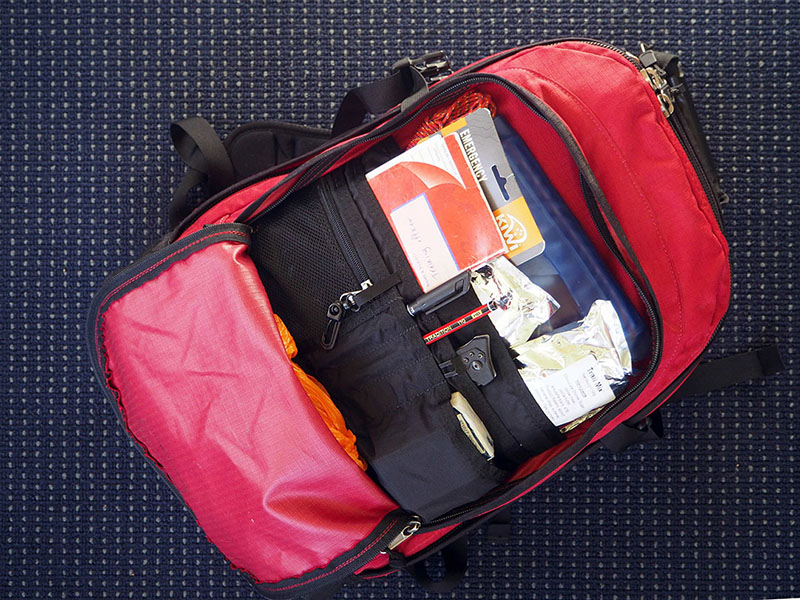
- trail mix
- jelly beans
- Lifestraw
- water purification tablets
- Nalgene bottle
- Kleen Kanteen bottle (on desk)
This way, I can purify and store water that I find (and boil it in the stainless steel Kleen Kanteen if necessary) and I have enough energy food to ward off the low-blood-suger-shakes for a little while. Additional rations would come from an aid centre if it got to that point, but water is sorted and people can survive without food for quite a while, despite getting hangry.
Survival gear
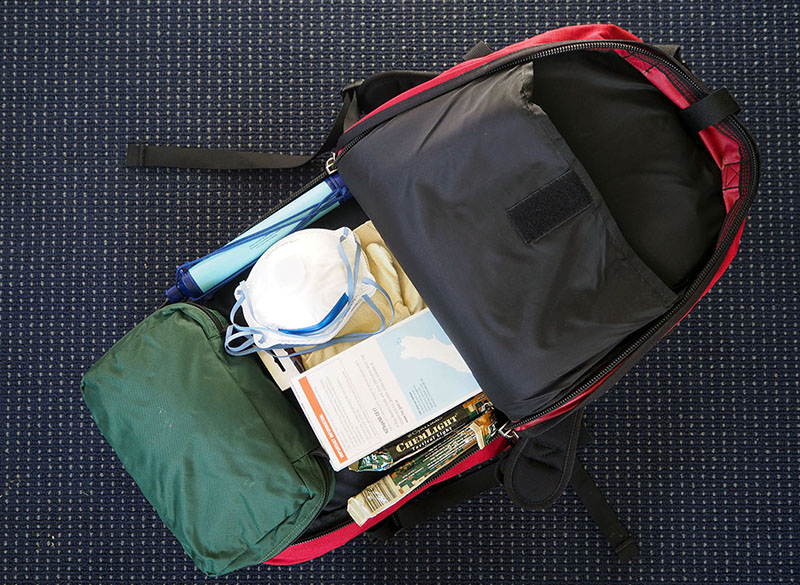
- survival and fire kit
- first aid kit
- dust masks
- work gloves
- light sticks
- BIC lighters
- duct tape
- waterproof matches
- EDC
- torch
- knife
- multi-tool
- charger cable
- pen, pencil, sharpie
- Rite in the Rain notebook
Note: the images are arranged in the way the bag is packed, not as per the lists above.
